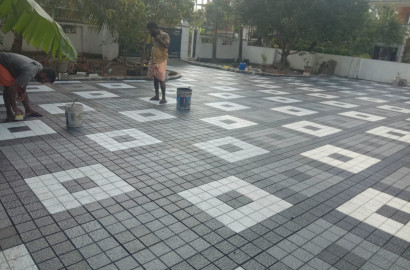Buying land in Lagos often comes with one familiar challenge: Omo Onile, the traditional land-owning families who control, sell, and sometimes resell plots across different areas.
But why is this system so widespread in Lagos compared to other parts of Nigeria?
To understand this, you need to look at Lagos’ history, population growth, land structure, and the complex relationship between indigenous families and modern urban development.
This article breaks down the real reasons Omo Onile culture is deeply rooted in Lagos and what buyers should know.
1. Historical Ownership of Land by Indigenous Families
Long before Lagos became Nigeria’s commercial hub, land was held by indigenous communities such as:
The Awori
The Egun
The Ijebu
The Ilaje
Other early settlers
These families owned land communally and passed it down through generations.
Even today, large portions of Lagos land still belong to these families, especially in:
Ibeju-Lekki
Epe
Badagry
Ikorodu
Abule Egba
Ipaja
Ayobo
Okokomaiko
Because of this long-standing ownership, selling family land has become a cultural and economic practice, making Omo Onile involvement very common.
2. Rapid Urban Expansion and Rising Demand for Land
Lagos is Africa’s fastest-growing city, and land demand increases every year.
As new areas open up for development, the first people selling plots are usually the indigenous families who inherited the land.
The high demand creates opportunities for:
Quick land sales
Subdividing land into plots
Negotiated prices
Multiple transactions within short periods
This demand-driven business environment keeps the Omo Onile system active and profitable.
3. Weak Land Documentation From Previous Generations
Many family-owned lands in Lagos were never formally registered with government authorities.
This means:
No deeds
No proper surveys
No records of boundaries
No legal transfers
With no formal structure, buyers must deal directly with family representatives.
This often results in:
Multiple family signatures
Confusing ownership claims
Risk of double-selling
As long as land documentation remains weak, Omo Onile will continue to play a major role.
4. Lagos Land Classification Favors the System
Large parts of Lagos fall under classifications like:
Excision
Gazette
Freehold
Committed acquisition
For lands that have been excised (released back to indigenous families by the government), Omo Onile becomes the primary authority for sales.
This legal structure keeps them relevant in areas where government allocation has not taken full control.
5. Lack of Affordable Housing and Government-Controlled Land
Because government-controlled land (with C of O and full documentation) is expensive and limited, many buyers turn to family land as a cheaper option.
This makes Omo Onile land:
More accessible
Faster to acquire
Easier to negotiate
The affordability gap keeps the Omo Onile system thriving among first-time buyers.
6. Cultural Influence and Traditional Authority
In many Lagos communities, Omo Onile holds strong traditional power.
They act as:
Custodians of ancestral land
Community representatives
Mediators in local land disputes
People trust them because of cultural familiarity, even when their process is risky.
7. Economic Survival for Indigenous Families
The truth is simple: selling land is a major source of income for many Lagos families.
With the rising value of real estate, families see land as:
Their inheritance
Their retirement plan
Their long-term financial security
As long as selling land remains profitable, the Omo Onile system will continue.
8. Slow Land Reform and Poor Regulation
Government attempts to regulate land in Lagos have been slow.
This gives room for:
Informal sales
Manipulated family receipts
Lack of uniform documentation
Extortion during construction
Until land reforms become stricter, Omo Onile activities will remain widespread.
9. Lagos’ Rapid Migration and Population Pressure
Lagos welcomes thousands of new residents monthly.
More people = more demand for housing = more pressure on available land.
Indigenous families take advantage of this influx, selling land quickly to meet the rising demand.
Because of this, buyers often meet Omo Onile before any official developer or government structure.
Conclusion
Omo Onile is common in Lagos because of a combination of history, culture, urban expansion, weak documentation, population growth, and market demand.
Understanding why the system exists helps buyers know how to navigate it safely.
Related posts:
When building a house, every decision counts. From the foundation to the finishing, everything you choose plays a role in the comfort, safety, and long-term durability of your home. But among all these decisions, one stands out more than most:...
When you start building a house, your attention often goes to the interior, tiles, wardrobes, lighting, kitchen fittings, because that’s where you spend most of your time. But one space that quietly tells the story of your home before anyone...


 Why Omo Onile Is Common in Lagos: The Real Reasons Behind the System
Why Omo Onile Is Common in Lagos: The Real Reasons Behind the System
 How to Choose the Right Roof Type When Building Your House
How to Choose the Right Roof Type When Building Your House
 Choosing the Right Flooring for Your Compound: A Practical Guide for Home Builders
Choosing the Right Flooring for Your Compound: A Practical Guide for Home Builders
 Why Building House in Nigeria Now Costs Twice as Much — The Truth Behind Soaring Construction Prices.
Why Building House in Nigeria Now Costs Twice as Much — The Truth Behind Soaring Construction Prices.
 Before You Buy Any Land in Nigeria — These Are the Documents You Must See First
Before You Buy Any Land in Nigeria — These Are the Documents You Must See First